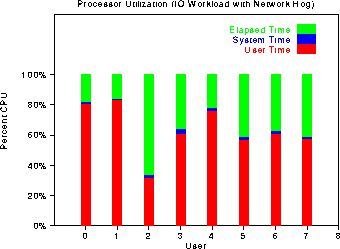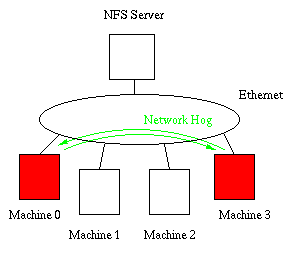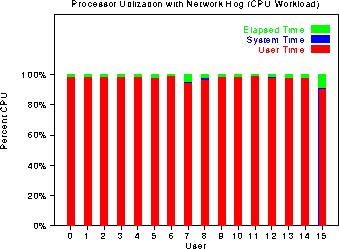
In stark contrast to the CPU Workload, the I/O Workload suffers a fair
amount, slowing down from 20% to 80%. By forcing processes to wait
longer for I/O, we lessen CPU utilization.
The point to be made here is a
simple one: one process that claims a large fraction of a shared
resource can have a detrimental affect on many processes in the
system. The scheduling implication of this is that processes that can be
classified as "network hogs" should be harnessed so that the whole
system can make adequate progress.
We also hope to show (in the near future) the effects of the "network
hog" on a switched-based network; in that experiment, the only
contention will be for the switch resources.

 Back to Top-Level
Back to Top-Level







 Back to Top-Level
Back to Top-Level